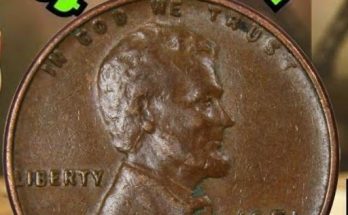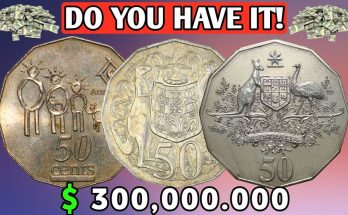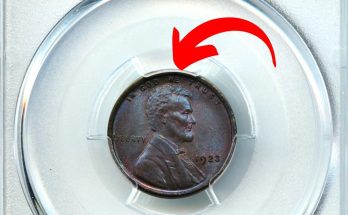
Are you looking for rare error pennies? Wondering what error pennies are worth money?
There are lots of different penny errors to look for — some are rare and some are common.
So… how do you tell the common error pennies from the rare ones? And what are they worth?
Are there pennies that look like errors but really aren’t? How much are those pennies worth?
Today I’m going to share with you everything you need to know about error pennies. Below, you will find:
- The ultimate penny error list with current values
- A list of rare error pennies that are difficult to find
- A list of common error pennies you can find in pocket change
- Details, photos, and videos about specific types of error pennies
The Ultimate Penny Error List
There are so many types of error pennies out there, it’s hard to know where to begin listing them. Billions upon billions of pennies are in circulation, and among them are countless errors just waiting to be found!
Of course, some errors are more common than others. So, what I’m going to do is break down the list of penny errors by “rare” ones and “common” ones.

Here are the 2 major lists of penny errors to look for — which includes a total of 9 different types of error pennies:
RARE PENNY ERROR LIST
Here are 5 of the rarest and most valuable types of penny errors:
#1 – Doubled Die Pennies

Of all error coins, there’s perhaps none more well-known than the doubled die — like the ones pictured above in my hand.
What are doubled die pennies?
A doubled die penny error occurs when the coin’s die is impressed twice, and at two slightly different angles, by the hub.
When a die with a doubled image goes into production work, it then strikes coins with the doubled image.
Sometimes only a few coins (and sometimes a few thousand) will escape from the U.S. Mint before the error is noticed.
In some cases, if the mistake is caught early enough, the doubled die coins will be recalled from the stockpile that’s ready for distribution into circulation and be destroyed. But many doubled dies go undetected by the U.S. Mint — only to be found by collectors who treasure these rare errors!
While doubled dies occur on every denomination of coin, they seem most prevalent among pennies.
Many doubled die pennies show the most prominent doubling in the inscriptions or date. However, a few exhibit so much doubling that it’s even obvious in the design details. For example, the 1984 doubled die penny shows significant doubling of Lincoln’s earlobe.
Here’s a list of the rarest and most popular doubled die pennies:
- 1955 doubled die penny — worth $1,100+
- 1969-S doubled die penny — $25,000+
- 1972 doubled die penny — $250+
- 1983 doubled die penny — $200+
- 1984 doubled die penny — $150+
- 1995 doubled die penny — $50+
I remember when the 1995 doubled die penny was first located. News of the discovery was on the radio, TV, and Internet. Everybody was looking for the 1995 doubled die penny — even me!
A similar thing happened when the 1955 doubled die was first reported. It was released at a time when coin collecting was already widely popular in the United States.
Discoveries like these and the media blitz that follows has helped firmly implant knowledge of (or at least an awareness of) doubled die pennies even, among non collectors. That’s one reason these coins are so popular… and valuable!
Some of the more obscure and minor doubled die coins are worth $25 to $100.
NOTE: Not all signs of doubling mean that a penny is a doubled die! In most cases, when you see a penny with doubled lettering or design, it’s really just mechanical doubling — which means the coin was double struck by the coin presses. This type of doubling is not an error. It’s just a type of defect in the striking process. Most coins with mechanical doubling are not worth anything extra.
#2 – Die Cap Pennies
One of the weirdest types of penny errors is the die cap — which occurs when a penny gets stuck to a die for many strikes.
With each strike against other pennies, the stuck coin gets flatter and flatter and ends up getting shaped around the die.
This can make the die cap error coin look something like a bottle cap. These rare penny errors are often worth $250 or more.
#3 – Off-Center Pennies
Off-center error pennies are made when the retaining collar that keeps the coin in place during striking fails to properly corral the coin. These off-center errors are missing some part of the design and/or lettering.
Drastic off-center error pennies (those that are 50% off-center) are quite rare. Pennies that are way off-center and show a complete date are even rarer — they’re worth $50 or more.
Off-center pennies that are 5% or 10% off-center and not showing a date are relatively common and worth $3 to $10.
#4 – Broadstrike Pennies
Another type of error that occurs when a penny isn’t struck in its retaining collar is the broadstrike.
Unlike the off-center error (which exhibits missing lettering and design elements), broadstrike pennies are not missing any lettering or design detail.
One of the common characteristics of a broadstrike is that it appears flatter and wider than normal.
These pancaked broadstrike pennies are rare and often worth $50 to $100 or more.
#5 – Transitional Error Pennies
Changes to the design or metallic composition of a penny sometimes leads to errors.
Such is the case when some 1943 pennies were struck on the bronze planchets that were intended for 1942 pennies. Likewise, some 1944 pennies were made from the 1943 steel planchets instead of the 1944 shell case blanks.
There are also errors in which some 1992 pennies show virtually no gap between the base of the “A” and “M” in “AMERICA” on the reverse of those coins.
One of the rarest transitional error pennies involves the 1982-D small date penny — which wasn’t supposed to be struck on a bronze planchet. A small handful of these 1982-D small date bronze cents have been found, and they’re worth thousands! A few other dates with similar errors have also been found.
These are the most popular and most valuable transitional error pennies:
- 1943 bronze penny (is not magnetic) — $100,000 and up
- 1944 steel penny (is magnetic and will not weigh more than 2.9 grams) — $85,000+
- 1982-D small date bronze penny (weighs 3.1 grams) — $10,000+
- 1983-D bronze penny (weighs 3.1 grams) — $3,000+
- 1989-D bronze penny (weighs 3.1 grams) — $2.500+
- 1992 close AM penny (virtually no gap between base of A and M) — $10,000+



